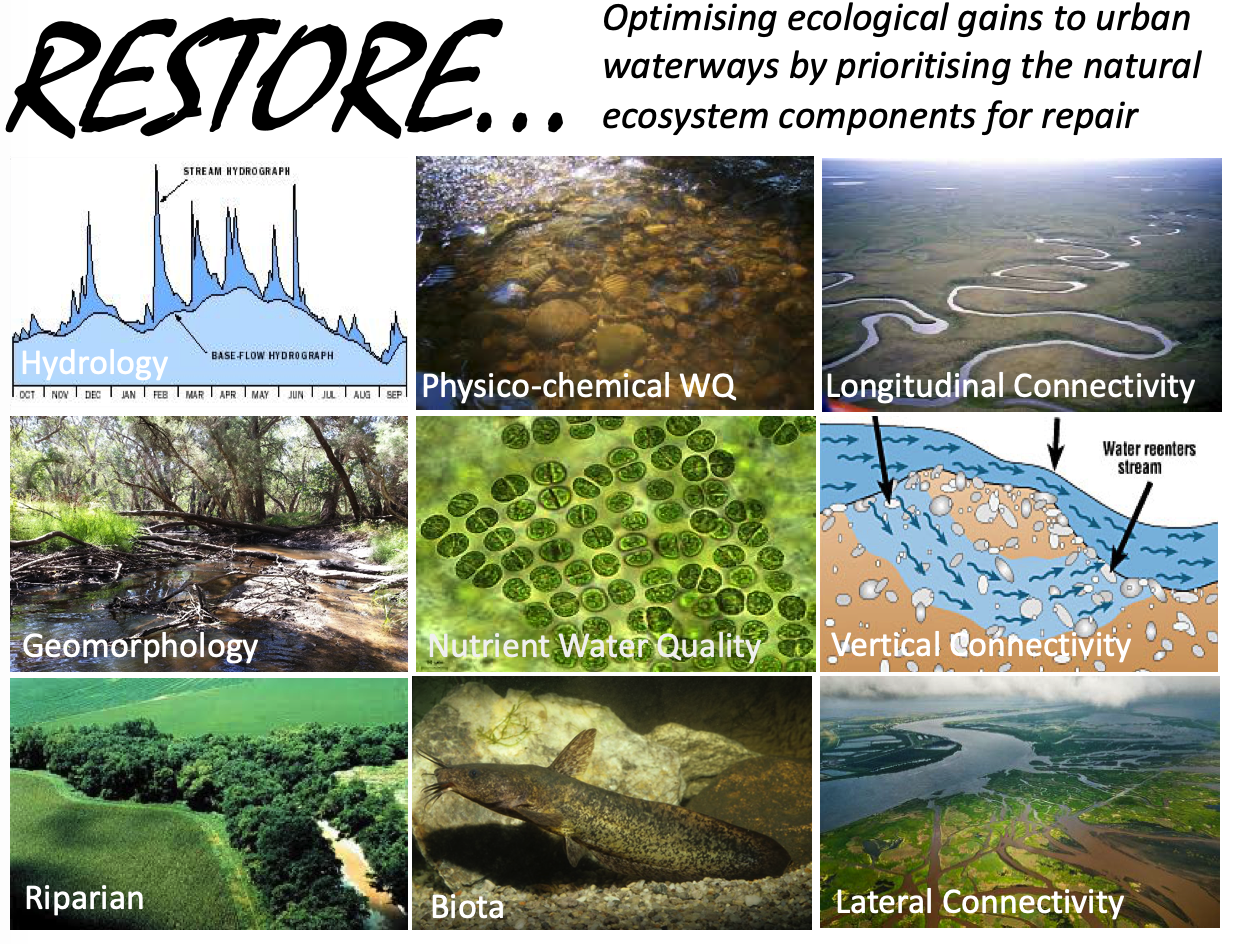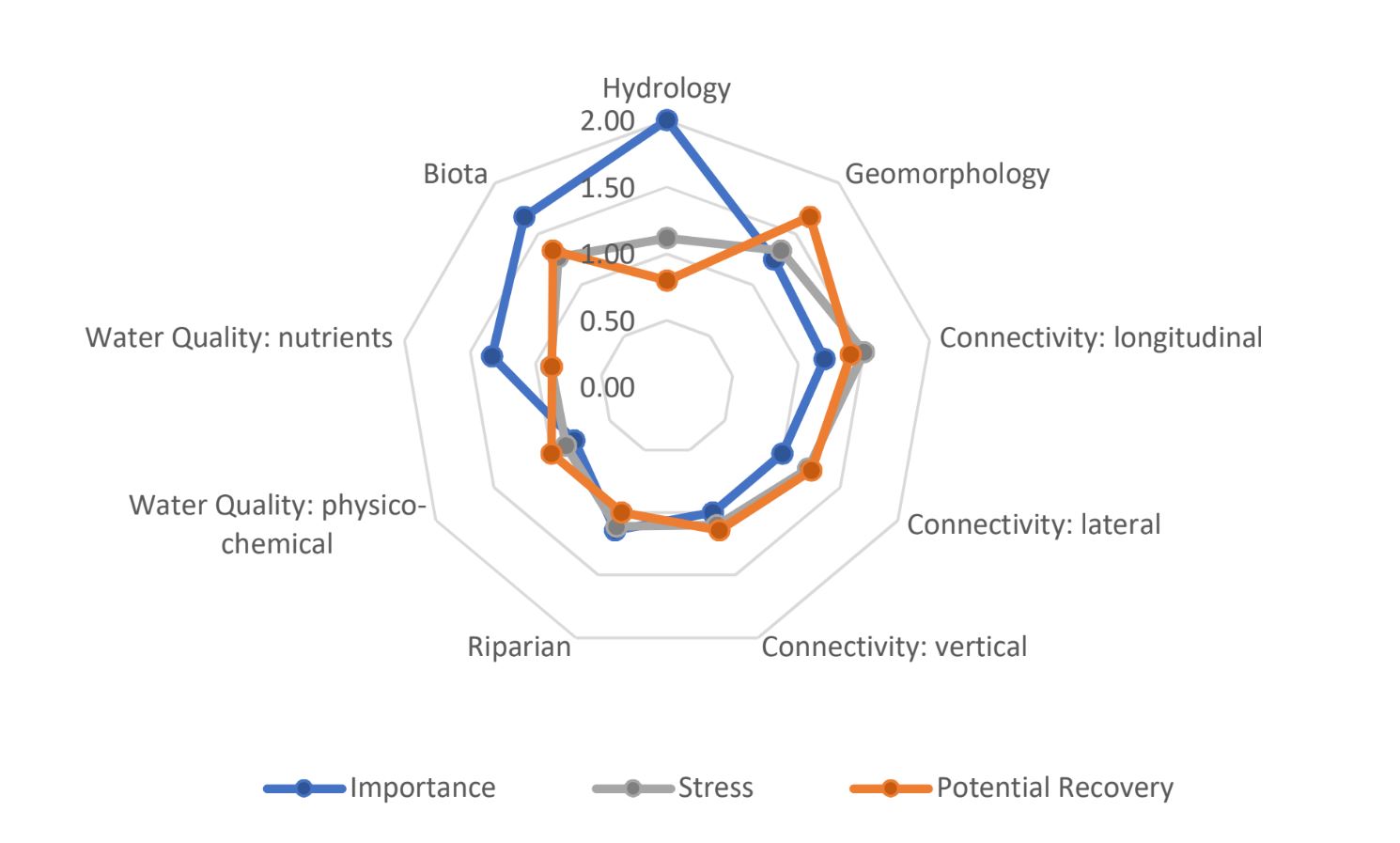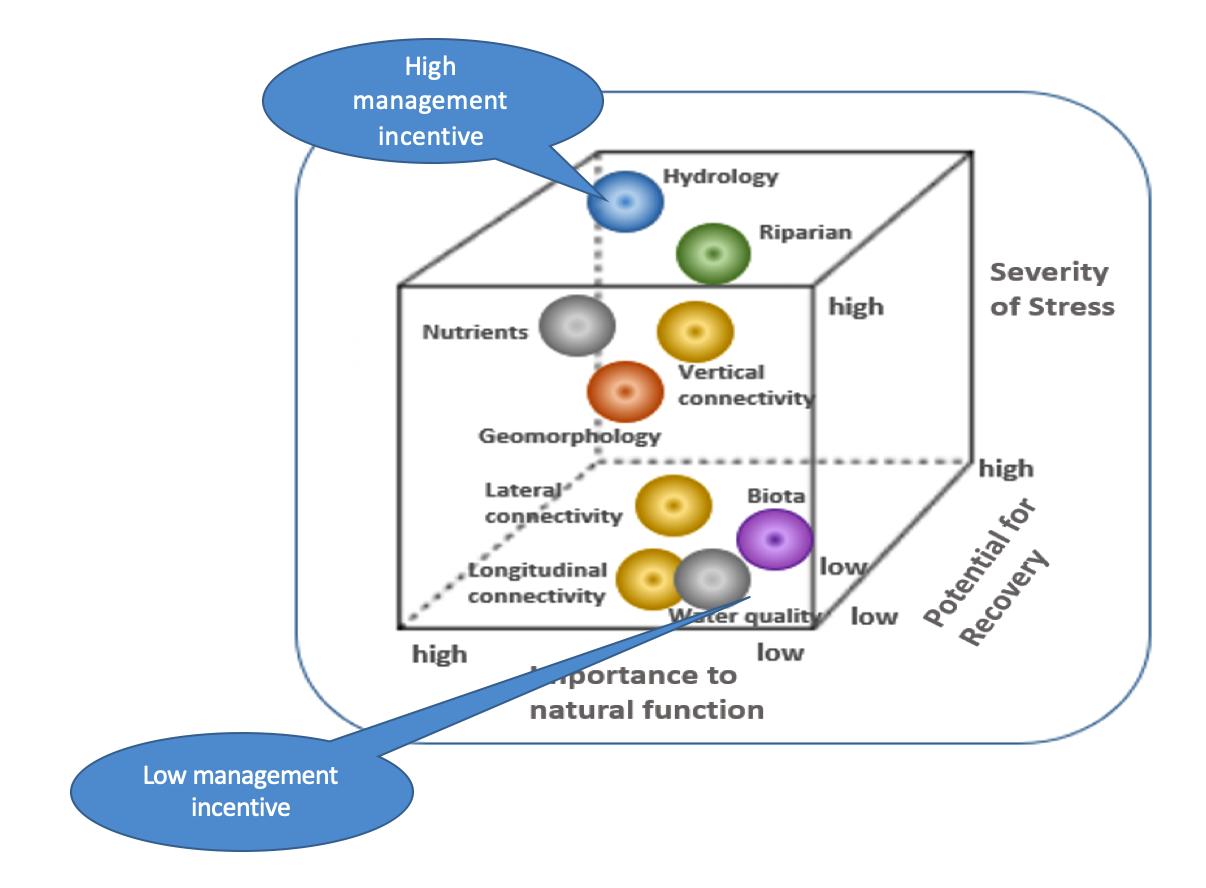RESTORE tool profiled at Riversymposium
In another great example of our Participants adopting our tools and using them in practice, Sally Boer from E2Designlab presented our RESTORE tool at the 22nd International River Symposium at the Brisbane Convention and Exhibition Centre on Monday 21 October.

Sally’s presentation on the opening day of the four-day international event was titled RESTOREing waterways: what should we do?
The RESTORE tool is a decision making tool developed by Dr Leah Beesley, Jennifer Middleton, Belinda Quinton and Peter Davies as part of our Tranche 1 project B2.23 (Protection and restoration of urban freshwater ecosystems: informing management and planning). The tool helps practitioners determine which components of urban waterway repair or design to focus on, by asking practitioners 126 questions about nine ecological components of the environmental and urban setting of their restoration site. It then identifies those ecosystem components likely to be most relevant to the site or catchment.
The RESTORE tool was developed through a thorough literature review and key input by waterway specialists, and is a companion tool to our Compendium of factsheets on improving the ecological function of urban waterways.

Sally explained to the Riversymposium audience how E2Designlab applied the RESTORE tool and the factsheets to a pilot site at Scrubby Creek in Brisbane’s Logan City area, a waterway intended to be strategically restored through Logan City Council’s Scrubby Creek Recovery Plan project.
The RESTORE tool results showed general alignment between the priorities that should be in place and the actions described in the recovery plan, including elements relating to the ecosystem drivers (importance), stress and recovery potential of the waterway.
Overall, Sally described the tool as an effective rapid appraisal tool that can quickly and easily identify focus areas and investment priorities. She listed its many benefits to the audience, including the wealth of scientific evidence supporting the tool, the way the tool challenges perceptions and biases and encourages professionals to evaluate their own assumptions, and the tool’s capacity to encourage collaboration by demanding a breadth of expertise and knowledge of the site to comprehensively and effectively apply it.

Sally also pointed out some limitations, including the fact the RESTORE tool applies equal weighting to all categories and criteria and that the potential recovery questions do not fully reflect the feasibility of actions needed for recovery, but she summarised by saying:
“RESTORE is a highly effective decision support tool that ensures all relevant factors are considered in the waterway site assessment. It is particularly useful where resources may not be available for in depth assessment of the site and its catchment and can assist to focus management priorities.”
Sally believes the tool would be best used by management teams, and will become more robust and efficient over time as the tool is refined and questions are streamlined.
This is valuable industry feedback. Thanks Sally and E2Designlab!